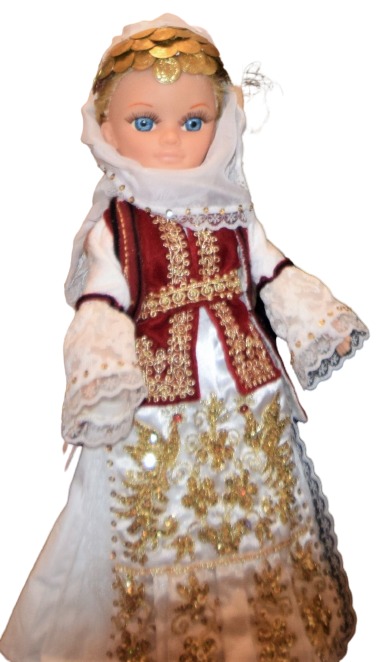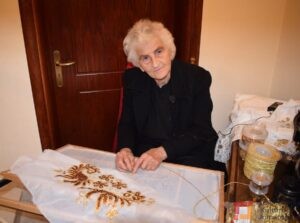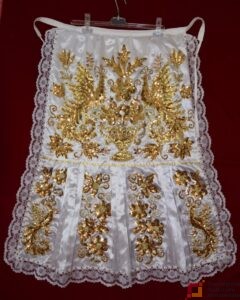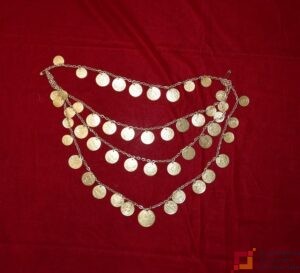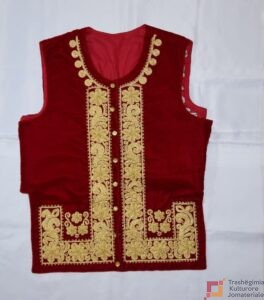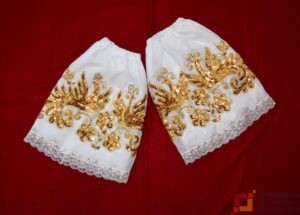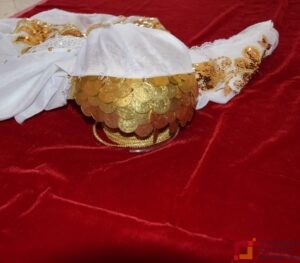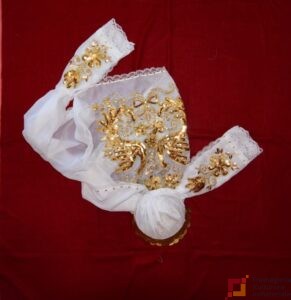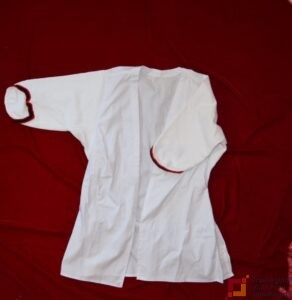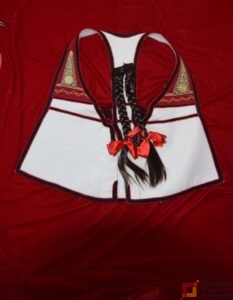The folk costume of Dropull’s girls and women has always been a masterfully handcrafted garment.
The elements of this costume are the following: shirt (ruti), dress, brostela, limaria, headscarf, short sleeves, jelek, woolen apron, golden sash, patuna-s, kaltunia-s, poçet (tsarouchia) and kounture-s. The headband is fastened to the hat and monetra.
Ruti is a white woven cotton shirt with long narrow sleeves attached to the wrists and neck.
Bibizari is a silk fabric used to make a wedding dress.
Skedari is worn in the front part of the body and is fastened on the back of the neck and has three tassels fixed with birbili and adorned with gold coins all around the edges.
Shami is a white cotton embroidered dress worn over a shirt. The short sleeves are fixed onto the shawl and used to be made of silk, while over time they changed and are made of lace. The sleeves are added as such underneath the short sleeves, are embroidered, and made of multi-color velvet.
The jelek is bodice-shaped, sleeveless, and worn over the brostela (neck), two-piece one (summer sigouni). In casual wear, girls and women come in dilino, while on ceremonial occasions they come in purple velvet. It is adorned with a cord and ribbon as well as other motifs.
Sita or sagiaki is a long, sleeveless, embroidered, wool, outer garment. The apron is embroidered woolen fabric. The woolen sash goes in casual wear while the gold one is for ceremonial occasions.
Patuna-s are small white cotton socks with floral patterns on the sole and uppers, typically worn indoors and go well without shoes. They are knee-high socks and are usually knitted in multiple colors.
Dropulli girls and women usually keep twin-breaded hair falling down their backs and decorate them with colorful ribbons. Then they wear the hat and put in the krehri. The hat is a red fez, adorned with a gold coin hanging down. A long tassel/fringe runs down to mid-forehead.
Krehri is a headpiece of silk that covers the hat, showing only a few gold coins on the front part. One side falls down the arm while the other is twisted on top of the head making a cone-like shape and fixing it with hair pins.

